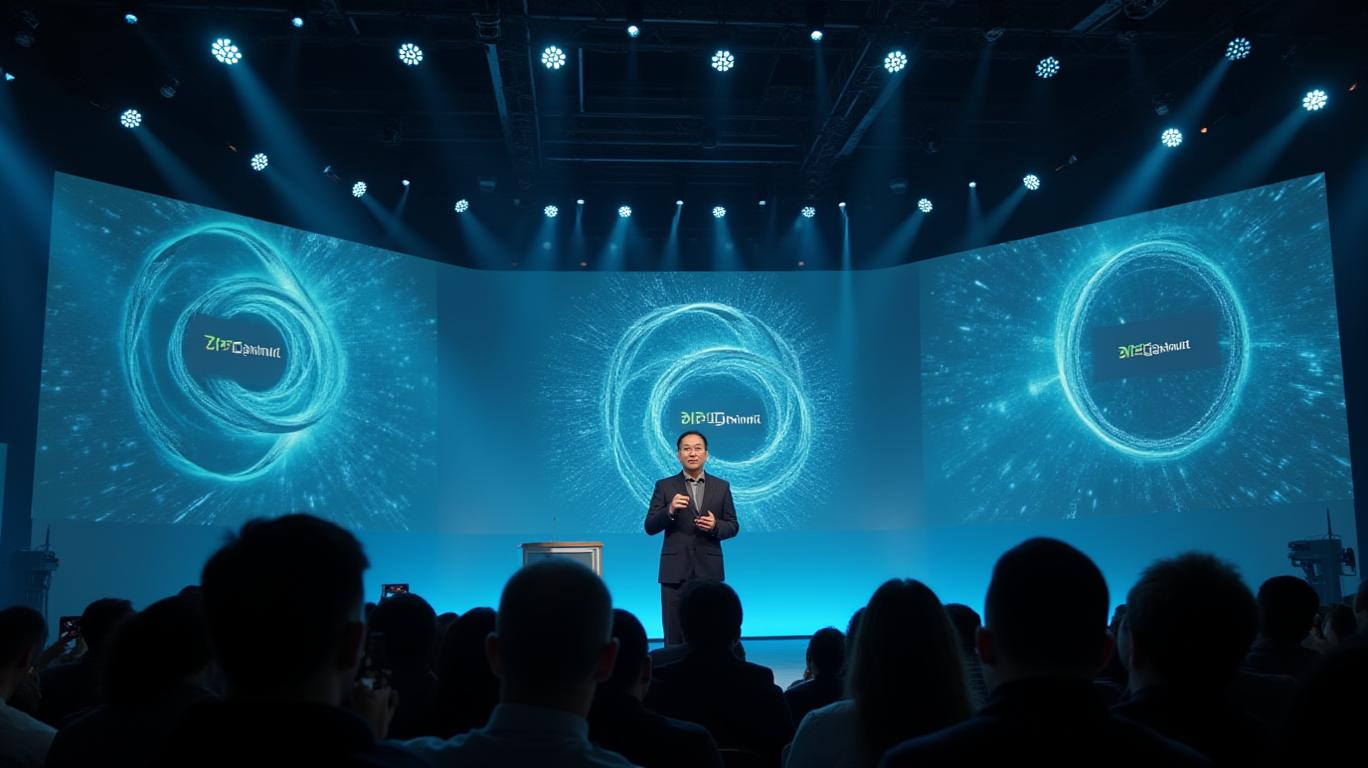NVIDIA's Unstoppable AI Engine: How Jensanity Fuels Dominance in a Turbulent Tech Landscape
In a world where AI chips are the new oil,
(NASDAQ: NVDA) has positioned itself as the OPEC of the algorithmic age. CEO Jensen Huang's recent whirlwind of activity in Taiwan—dubbed “Jensanity” by fans—has unveiled a roadmap that cements NVIDIA's stranglehold on the AI infrastructure market. From hardware breakthroughs to supply chain mastery, NVIDIA is pulling ahead in a race where competitors are left scrambling. Here's why investors should ignore near-term volatility and double down on this AI titan.
Hardware Innovation: The NVLink Fusion Revolution
NVIDIA's recent announcements in Taiwan reveal a relentless focus on hardware-software co-design, a strategy that's widening its moat. The NVLink Fusion architecture, unveiled at Computex, allows customers to mix NVIDIA GPUs with third-party CPUs and ASICs—a radical departure from its historically closed ecosystem. This flexibility is a Trojan horse: while competitors like AMD and Intel are still siloed in proprietary architectures, NVIDIA is enabling semi-custom AI factories for hyperscalers like Fujitsu and Qualcomm.
The Grace Blackwell system (expected Q3 2025) takes this further, offering a 40x performance leap over its predecessor. Crucially, these chips are designed to power agentic AI (autonomous software entities) and physical AI (real-world robotics), two markets poised for exponential growth.
While rivals trade on backward glances, NVIDIA is sprinting forward. Even skeptics must acknowledge the 22% revenue growth in its AI Data Center segment last quarter—a figure that will only accelerate as Grace Blackwell scales.
Ecosystem Lock-In: Taiwan's Silicon Heartbeat
Huang's Taiwan tour wasn't just about product launches—it was a masterclass in ecosystem lock-in. By anchoring its new global headquarters (“NVIDIA Constellation”) in Taipei's Beitou-Shilin Technology Park, the company is ensuring its engineers remain embedded in Taiwan's semiconductor ecosystem. This proximity to TSMC, Foxconn, and ASUS isn't just convenient—it's strategic.
Consider the $222M government subsidy for NVIDIA's AI R&D center, which will employ 1,000 researchers. This isn't just R&D—it's a force multiplier. TSMC is using NVIDIA's Omniverse platform to create digital twins of its fabs, slashing design cycles. Foxconn is deploying NVIDIA's Isaac Sim to train industrial robots, while ASUS is building Blackwell-powered AI systems. The result? A virtuous cycle where every partner's success reinforces NVIDIA's dominance.
The data is clear: NVIDIA's ecosystem is becoming an AI operating system, not just a supplier. Competitors can't compete without integrating into it—a structural advantage that's nearly impossible to replicate.
Supply Chain Control: Taiwan's AI Manufacturing Engine
Taiwan's role in global semiconductors is no secret, but NVIDIA is turning it into a moat of scale. The island now hosts 92% of the world's advanced chip foundries, and NVIDIA is deepening its ties. Its collaboration with TSMC on cuLitho—a GPU-accelerated lithography tool—has cut chip design costs by 30%, while its Omniverse-powered digital twins allow factories to simulate layouts before breaking ground.
This isn't just about manufacturing speed—it's about control. Competitors like Google or Amazon may build custom AI chips, but without access to TSMC's 3nm nodes or NVIDIA's software stack, they're playing catch-up. Meanwhile, NVIDIA's Taiwan-first strategy ensures its supply chain is insulated from geopolitical risks, as 75% of its AI chip production now originates from the region.
Why Invest Now?
Bearish sentiment on NVDA often cites near-term risks: AI winter fears, rising competition, or macroeconomic slowdowns. But these miss the point. NVIDIA's moat isn't just about hardware—it's about owning the AI factory operating system. Its CUDA-X platform, NVLink Fusion, and Omniverse ecosystem form a network effect so powerful that even cloud giants like Microsoft and AWS are forced to integrate NVIDIA's tools into their AI stacks.
The math is undeniable: NVIDIA's AI infrastructure business is growing at 25% annually, with gross margins north of 60%. Its $67B market cap is dwarfed by its $250B addressable market in AI chips, data centers, and robotics.
Final Call: Buy the Dip, Own the Future
Jensen Huang's “Jensanity” isn't just hype—it's a blueprint for AI hegemony. NVIDIA's blend of hardware innovation, ecosystem lock-in, and supply chain control creates a moat that's widening by the quarter. For investors, this is a generational opportunity: own the company that's redefining the infrastructure of the AI age. The volatility? Just another chance to buy shares at a discount to their $600+ intrinsic value.
Action Item: Aggressively accumulate NVDA on dips below $450. The AI revolution isn't slowing—it's just getting started, and NVIDIA is driving the engine.

Comments
No comments yet